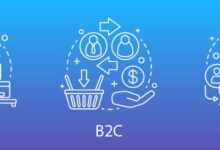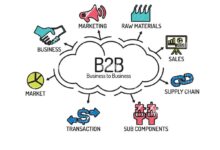B2B2C Explained: 7 Powerful Insights You Need to Know Now
Ever heard of B2B2C but not quite sure what it means? You’re not alone. This hybrid business model is quietly reshaping industries, blending the best of B2B and B2C strategies into one powerful framework. Let’s dive in and unpack everything you need to know.
What Is B2B2C? A Clear Definition

The term b2b2c stands for Business-to-Business-to-Consumer, a model where a company sells its products or services to another business, which then delivers them to end consumers. It’s not just B2B or B2C—it’s both, working in tandem.
Breaking Down the Acronym
At first glance, b2b2c might look like a typo. But it’s actually a strategic evolution in how businesses connect with customers. The first ‘B’ is your company. The second ‘B’ is your partner—like a retailer, platform, or distributor. The ‘C’ is the final consumer who buys the product or service.
- Example: A software provider (B) sells CRM tools to a bank (B), which then offers personalized services to its customers (C).
- Another example: A health tech startup provides AI diagnostics to clinics (B), who use it during patient (C) consultations.
How B2B2C Differs from B2B and B2C
Traditional B2B focuses on transactions between businesses, often with long sales cycles and relationship-driven deals. B2C, on the other hand, targets individual consumers with emotional appeals and mass marketing.
But b2b2c bridges these worlds. It maintains the scale and structure of B2B while tapping into the emotional, personalized experience of B2C.
“B2B2C isn’t just a model—it’s a mindset shift. It forces companies to think beyond their immediate buyer and consider the end-user experience.” — Forbes Insights, 2023
The Rise of the B2B2C Model in Modern Business
The b2b2c model has surged in popularity over the past decade, fueled by digital transformation, e-commerce growth, and changing consumer expectations. Companies no longer need to own every touchpoint to influence customer behavior.
Market Trends Driving B2B2C Adoption
Several macro trends are accelerating the shift toward b2b2c strategies:
- Digital Platforms: Marketplaces like Amazon, Shopify, and Alibaba enable suppliers to reach consumers through third-party retailers.
- Subscription Economies: SaaS providers partner with enterprises that deliver value-added services to end users.
- Customer-Centricity: Brands now recognize that even indirect customers deserve great experiences.
According to a McKinsey report, companies leveraging b2b2c models saw up to 30% higher customer retention than traditional B2B firms.
Industries Leading the B2B2C Revolution
While b2b2c spans multiple sectors, some industries are leading the charge:
- Healthcare: Medtech firms supply hospitals with diagnostic tools used directly on patients.
- Financial Services: Fintech platforms integrate with banks to offer personalized financial advice to consumers.
- Retail & E-commerce: Brands sell through online marketplaces that handle fulfillment and customer service.
- Automotive: Car manufacturers partner with dealerships that offer digital buying experiences powered by AI.
These industries prove that when businesses align incentives across the chain, everyone wins—including the end consumer.
Key Benefits of the B2B2C Model
Adopting a b2b2c strategy isn’t just trendy—it delivers tangible advantages. From scalability to deeper customer insights, the benefits are compelling.
Expanded Market Reach Without Direct Sales Overhead
One of the biggest perks of b2b2c is access to new markets without building a massive sales force. By partnering with established businesses, you piggyback on their customer base.
- No need to invest heavily in advertising or retail infrastructure.
- Partners already have trust and brand equity with consumers.
- Faster time-to-market compared to launching direct-to-consumer (DTC) channels.
For example, a skincare brand supplying products to Sephora can instantly reach millions of beauty shoppers without running its own stores.
Enhanced Customer Insights Through Partner Data
In traditional B2B, you rarely see how your product performs at the consumer level. But in a well-structured b2b2c model, data-sharing agreements allow you to gather valuable insights.
- Track usage patterns, preferences, and feedback from end users.
- Improve product design based on real-world behavior.
- Personalize future offerings using aggregated consumer data.
Take Adobe, for instance. Through partnerships with educational institutions (B), they gain insights into how students (C) use Creative Cloud, helping them refine features and pricing tiers.
Stronger Brand Equity and Trust Transfer
When your product is embedded within a trusted business ecosystem, some of that trust rubs off on your brand. This is known as trust transfer.
- Consumers are more likely to try a new product if it’s offered by a brand they already know.
- Partners act as validators, reducing perceived risk.
- Co-branded experiences enhance credibility for both parties.
A study by Harvard Business Review found that 68% of consumers were more willing to adopt a new technology if it came through a familiar provider.
Challenges and Risks in B2B2C Models
Despite its advantages, the b2b2c model isn’t without hurdles. Navigating control, alignment, and data privacy requires careful planning.
Losing Direct Control Over the Customer Experience
One of the biggest risks in b2b2c is ceding control over how your product is presented and used. If the intermediary delivers poor service, your brand suffers—even if you’re not at fault.
- Inconsistent messaging or bad customer support can damage reputation.
- Limited ability to fix issues in real-time.
- Different regional partners may apply varying standards.
For example, a high-end audio equipment maker might be frustrated if a retail partner bundles their premium headphones with low-cost gadgets, diluting brand perception.
Aligning Incentives Across the Chain
Getting all parties to work toward the same goal is easier said than done. The original business (B1), the intermediary (B2), and the consumer (C) often have conflicting priorities.
- B1 wants brand consistency and long-term growth.
- B2 may prioritize short-term profits or sales volume.
- C cares about value, convenience, and experience.
Without strong contracts and shared KPIs, misalignment can lead to friction, reduced performance, and partnership breakdowns.
Data Privacy and Security Concerns
Sharing consumer data between partners raises legal and ethical questions. Regulations like GDPR and CCPA make data handling complex.
- Who owns the customer data—the partner or the original supplier?
- How is consent managed across multiple touchpoints?
- What happens in case of a data breach?
Companies must establish clear data governance frameworks and ensure compliance across the entire chain. Failure to do so can result in fines, lawsuits, and reputational damage.
Successful B2B2C Business Models and Case Studies
The true power of b2b2c becomes clear when we look at real-world success stories. These companies didn’t just adopt the model—they mastered it.
Amazon Web Services (AWS) and Third-Party Sellers
AWS provides cloud infrastructure to thousands of businesses, many of which run consumer-facing apps and e-commerce stores. While AWS doesn’t interact directly with end users, its technology powers millions of customer experiences.
- Sellers on Amazon Marketplace rely on AWS for hosting, storage, and AI tools.
- AWS benefits from scale and recurring revenue.
- Consumers enjoy fast, reliable shopping experiences—thanks to backend tech they never see.
This is a textbook b2b2c model: invisible infrastructure enabling visible consumer value.
Shopify and Its Merchant Ecosystem
Shopify sells its e-commerce platform to businesses (B), who then create online stores for consumers (C). But Shopify goes further—it offers payment processing, marketing tools, and even fulfillment services.
- Merchants get a complete toolkit to run their operations.
- Consumers enjoy seamless checkout and delivery experiences.
- Shopify collects subscription fees and transaction revenues.
By investing in the end-user experience, Shopify strengthens its appeal to merchants. It’s a virtuous cycle driven by b2b2c thinking.
Microsoft and Enterprise Software Integration
Microsoft sells enterprise software like Dynamics 365 and Microsoft 365 to large organizations. These companies then deploy the tools internally and sometimes expose them to customers.
- Banks use Microsoft-powered portals for client banking.
- Hospitals run patient management systems built on Azure.
- Retailers use Teams for customer support chatbots.
Though Microsoft doesn’t market directly to end users, their brand becomes associated with smooth digital experiences. This indirect influence boosts loyalty and adoption across the board.
How to Build a Winning B2B2C Strategy
Want to implement a successful b2b2c model? It takes more than just finding a partner. You need a clear strategy, aligned goals, and customer-centric design.
Step 1: Identify the Right Partners
Not all businesses make good intermediaries. Look for partners who:
- Have strong customer relationships.
- Share your brand values and quality standards.
- Are open to collaboration and data sharing.
Conduct due diligence on potential partners’ reputation, tech capabilities, and customer service record. A bad fit can do more harm than good.
Step 2: Co-Design the End-User Experience
Even if you don’t touch the customer directly, you should care deeply about their journey. Work with your partner to co-create the user experience.
- Ensure your branding is consistent and visible where appropriate.
- Provide training and support materials for the partner’s staff.
- Use feedback loops to continuously improve the offering.
For example, Peloton supplies bikes to hotels (B), which offer workouts to guests (C). Peloton ensures the experience feels authentic by curating classes and maintaining app quality.
Step 3: Establish Clear Metrics and Governance
Define success jointly. Agree on KPIs such as customer satisfaction, retention rates, and Net Promoter Score (NPS).
- Set up regular review meetings with partners.
- Use shared dashboards for transparency.
- Include performance clauses in contracts.
Strong governance prevents drift and keeps everyone accountable.
The Future of B2B2C: Trends and Predictions
The b2b2c model isn’t going anywhere—it’s evolving. Emerging technologies and shifting consumer behaviors are shaping its next phase.
AI and Personalization at Scale
Artificial intelligence is making it easier to personalize experiences even in indirect sales models. With machine learning, companies can tailor recommendations, pricing, and content based on individual behavior.
- AI-powered chatbots assist consumers through partner platforms.
- Predictive analytics help optimize inventory and marketing.
- Dynamic pricing adjusts based on demand and user profile.
As AI becomes more accessible, b2b2c players will deliver hyper-personalized experiences without owning the customer relationship.
Embedded Finance and Invisible Commerce
We’re moving toward a world where commerce happens seamlessly within non-commerce contexts. This is known as embedded finance or invisible commerce.
- A car manufacturer embeds insurance and financing options at purchase.
- A fitness app partners with a bank to offer health-linked savings accounts.
- A SaaS platform includes payment gateways for its users’ customers.
In these cases, the original provider (B1) enables financial services (via B2) to reach consumers (C)—a perfect b2b2c play.
Sustainability and Ethical Supply Chains
Consumers increasingly care about where products come from and how they’re made. In response, b2b2c companies are using transparency to build trust.
- Blockchain tracks product origins from factory to shelf.
- Partners co-market sustainable practices to end users.
- Brands highlight ethical sourcing in co-branded campaigns.
A 2023 Deloitte survey found that 74% of consumers are more loyal to brands that demonstrate social responsibility—even when accessed through third parties.
Why B2B2C Is More Than Just a Buzzword
At this point, it should be clear: b2b2c is not a passing fad. It’s a fundamental shift in how value is created and delivered in the digital age.
From Transactional to Ecosystem Thinking
Traditional business models focus on linear transactions. B2B sells to B2, done. But b2b2c encourages ecosystem thinking—where multiple players collaborate to serve the end user.
- Value is co-created, not just transferred.
- Success depends on network effects and synergy.
- Innovation happens at the intersection of partners.
This mindset fosters resilience, agility, and long-term growth.
The Blurring Line Between B2B and B2C
Today’s buyers—whether corporate procurement officers or individual shoppers—expect the same level of convenience, speed, and personalization. The old distinctions are fading.
- B2B buyers want Amazon-like experiences.
- B2C customers appreciate professional-grade tools.
- Decision-making involves both logic and emotion.
The b2b2c model thrives in this hybrid world, offering the best of both realms.
Empowering Innovation Through Collaboration
Perhaps the most exciting aspect of b2b2c is its potential to drive innovation. When companies collaborate across the chain, they unlock new possibilities.
- Joint product development becomes feasible.
- New revenue streams emerge from shared data.
- Customer problems are solved more holistically.
Instead of competing for control, businesses can focus on creating superior outcomes for the end user.
What is B2B2C and how does it work?
B2B2C, or Business-to-Business-to-Consumer, is a model where a company sells its products or services to another business, which then delivers them to end consumers. It combines B2B efficiency with B2C customer experience, enabling indirect yet impactful market reach.
What are some real-world examples of B2B2C?
Examples include Shopify (selling e-commerce tools to merchants who serve consumers), AWS (providing cloud infrastructure used by apps consumers interact with), and fintech platforms integrated into banking apps used by customers.
What are the main benefits of a B2B2C strategy?
Key benefits include expanded market reach without direct sales overhead, enhanced customer insights through partner data, and stronger brand equity via trust transfer from established intermediaries.
What challenges do companies face in B2B2C models?
Common challenges include losing direct control over the customer experience, misaligned incentives between partners, and navigating data privacy regulations when sharing consumer information.
How can a business build a successful B2B2C model?
To succeed, businesses should choose the right partners, co-design the end-user experience, establish clear performance metrics, and maintain strong governance and communication throughout the partnership.
The b2b2c model is redefining how businesses grow and compete. It’s not about cutting out the middleman—it’s about empowering them to deliver better value to the end customer. By embracing collaboration, data-sharing, and customer-centric design, companies can unlock new levels of innovation and loyalty. Whether you’re a startup or an enterprise, understanding and leveraging b2b2c could be your next strategic advantage.
Further Reading:









